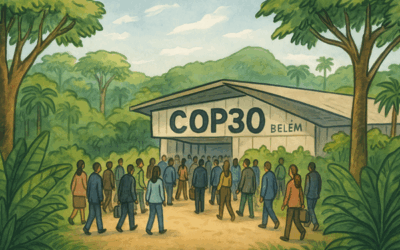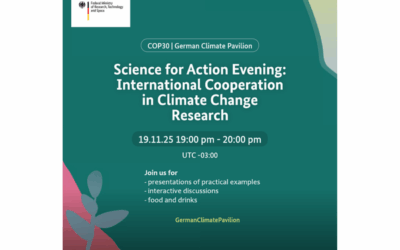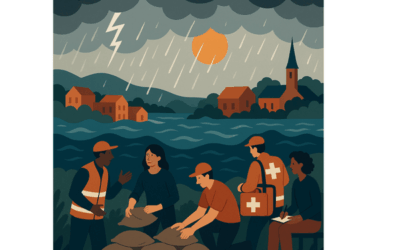The DKKV is…
German Committee for Disaster Reduction e.V. (ger.: Deutsches Komitee Katastrophenvorsorge e.V.)
Newsblog
COP30 in BEléM
COP30 in Belém has come to an end. Dr. Friedrich Bohn, environmental systems analyst and representative of the DKKV, accompanied the negotiations on site and provides insights into the key outcomes. While discussions were extensive, a decisive breakthrough did not...
Cop30 – German Climate Pavilion
COP30 in Belém is in full swing. On 19 November (19:00–21:00, Belém local time; Germany -4 hours), the "Science for Action Evening" will take place. Under the title “International cooperation in climate change research: building data, trust, and momentum for change”,...
Webinar: Localising Resilience – Rethinking Community-Led Disaster Management
Disasters are growing in frequency and complexity, yet too often, affected communities are placed at the end of the decision-making chain. This webinar explores how localisation and co-creation can transform humanitarian action — from something done to communities...
Delegation from National Institute for Disaster Management of the Republic of Korea visited The DKKV
A delegation from the National Institute for Disaster Management (NDMI) of the Republic of Korea visited the DKKV today as part of the Bonn Network. The participants gained insights into the work of the network. Dr. Benni Thiebes (DKKV) and David Jacome-Polit (ICLEI)...
Follow us




What is disaster risk reduction?
Storms, natural hazards and extreme events can quickly become a danger to people and the environment. But climate change, extreme urbanization, power outages and fires also offer potential hazards.
A disaster occurs when the functioning of a community or society is impaired or interrupted and, as a result, high human, material, economic and ecological losses occur that cannot be managed alone.
Precautionary measures can help to reduce the consequences and impact of the disaster. Depending on the hazard and personal circumstances, the precautionary measures to be taken may vary.
Find out more about potential hazards and individual precautionary measures on our topic pages.






